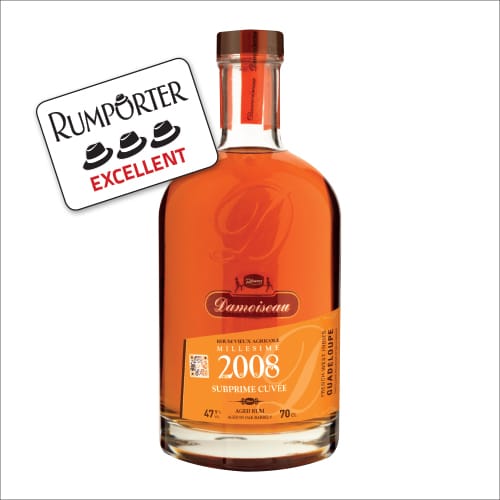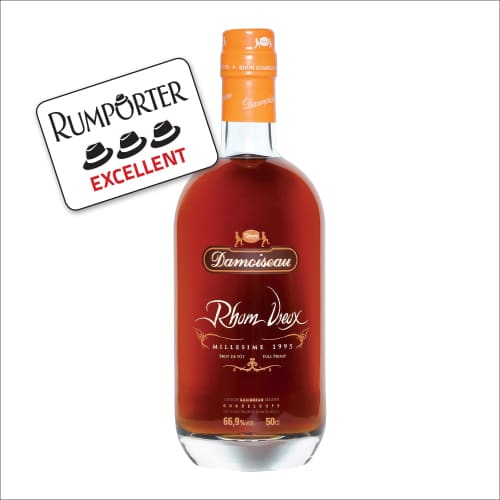In Guadeloupe between the gentle Corneille ravines and the translucent waters of Autre-Bord, stands the Bellevue-Damoiseau distillery, the last rhum agricole distillery in Grande-Terre. In the heart of the island’s sugarcane basin, the distillery produces this rhum, enjoyed in over forty countries. Here it is easier to understand the climates of this terroir, which gives it its reputation, and is the ideal location to savour its expressions, not far from the breakwater below, which served as a welcome port for its many aristocratic residences two centuries ago. This reputation extends to the rhum, lightly structured due to its low concentration of congeners. Because this is where the secret lies: two columns topped with preheaters (chauffe-vins) produce distillates measuring 89%. They’ve eradicated some acids and fatty acid esters, but none of the complexity.
Damoiseau 2008 Subprime Cuvée, Bellevue Le Moule distillery – 47.9%
The mischievous Hervé Damoiseau’s way of thumbing his nose at the financial crisis? This Subprime was created in 2008, of course.
Nose: a very light perfume of coconut water, reinforced by notes of Amarena cherry and pineapple. A salty element boosts the ensemble along with mace, which is more persistent.
Taste: the fine qualities of the distillery’s white rhum are rounded out by a fine, balanced woodiness: Ceylon cinnamon, pink peppercorn and ginseng. Fruit is absent, but the aromatic profile continues to develop with notes of rosewood.
Finish: the cinnamon makes a notable return, but pipe tobacco is also present. No bitterness is present, only a perfect balance.
Damoiseau 1995 Brut de fût, Bellevue Le Moule distillery – 66.9%
Made from a 50/50 combination of rhum agricole and traditional molasses-based rum, this spirit leans toward the more extreme register of bitter. It should be tasted in two phases in order to give it time to open to its fullest.
Nose: Secrestat bitters, ristretto and Chinese rhubarb share the bitterness between them. Behind this, sugar apple makes a subtle appearance.
Taste: gentian, turmeric, angostura bark and a more astringent hint of guarana bring out a bitterness which is softened by the molasses.
Finish: an initial sharp bitterness, with quinquina, before notes of aged-cider and varnished mahogany complete the aromatic profile.


